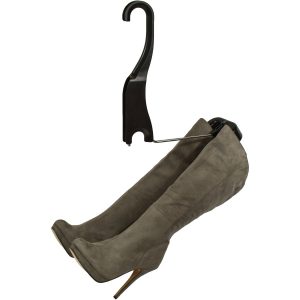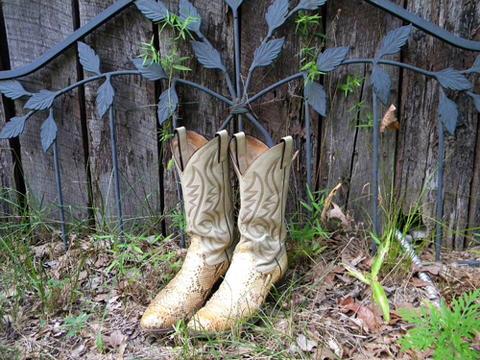
Exotic leather looks beautiful. It also requires different care due to the makeup of the material. We’ve included instructions for various types of exotic leather that you can use to care for your boots, shoes, handbags, belts, wallets and more.
Ostrich
Ostrich is one of the most popular exotic leathers used to make leather items. It’s stylish, strong, and very versatile. Items made from ostrich that are properly cared for can last for decades.
Ostrich leather is very sensitive to all types of oils. So the first thing to avoid is any type of oil-based conditioner or cleaner. The second thing to remember is that your natural skin oils may also affect the leather. You may notice that the leather changes color over time — that’s the sensitivity to oils we mentioned, especially if the product comes into contact with your skin frequently (such as your favorite purse, or your pair of ostrich boots that you frequently take on and off).
Keep your ostrich boots clean by getting rid of visible dirt and dust using a soft brush. To get rid of dried mud, use a slightly damp cotton cloth. If there’s a larger spill, or you’ve gotten caught in a rain shower, use a dry cotton cloth to absorb as much moisture as possible. If you accidentally spill an oil-based substance on your ostrich leather, sprinkle talc over the affected area and let it sit for 10-15 minutes. The talc will absorb the oil, and you can then brush off the talc with a brush or clean cloth.
Once your ostrich items are dry and clean, apply an even layer of exotic leather conditioner across the item. Let that dry. If the leather feels or looks dry once it’s absorbed that first layer, go ahead and add a second. Once that’s dry, you can use a leather polish (check to see that it’s exotic leather friendly), and buff the item with a cotton cloth. Because of the nature of ostrich leather, you won’t be able to buff it up to a super shine like you can with cowhide. As a final step, you’re going to apply a water protector — make sure that the product you use is non-silicone.
Snakeskin
Proper snakeskin leather care can be intensive but is important for this beautiful and delicate material.
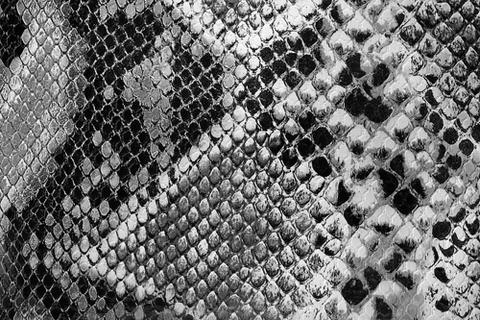
Wipe off dust and debris with a soft cotton cloth — do this with the direction of the scales (not against them). To loosen dirt from underneath the scales, use a small, soft brush (like a makeup brush or small paintbrush). Don’t lift the scales as you may break them off.
Dirt that won’t come loose with a dry cloth can be removed with a slightly damp cloth, and we really mean “slightly” here. Snake scales are water-resistant so any extra moisture will run down the scales and into the membrane. That’ll make the membrane dry out once the water evaporates, and, in turn, cause the scales to dry out and curl.
For a conditioner, use a product made especially for snakeskin/reptile skin. It will be lighter than a cowhide conditioner, which you’ll want to avoid with exotic leathers as it can build up a residue around the membranes that keep the scales in place. That will damage the membranes, causing the scales to crack off.
If your snakeskin products are new and you’re looking to shine up the leather, use a cream product, not a hard wax. Definitely make sure the cream polish is neutral and not colored, as that’ll react badly with the snakeskin and may turn it odd colors. Keep the cream polish application very light. If your snakeskin is older, you might want to skip the shine. That’s because older methods of tanning used salt, and if you put conditioner over leather that’s been salt-tanned, the conditioner will prevent the leather from drawing in any moisture from the air and it’ll get even drier.
If your product has a layer of snakeskin that’s been placed over cowhide, that cowhide will dry out in time. To combat that, use a good leather conditioner on the inside of your boot. Apply a generous layer, and let it sit overnight or even a couple of days. Repeat if the leather stills feel dry.
Lizard
Lizard leather is very similar to snakeskin, from the scales to paying attention to the inside of the boot if it’s made from cowhide.
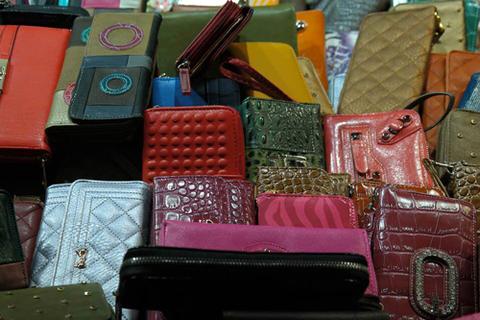
There is, however, one notable exception at the end of the lizard leather care process: Do not use a wax or cream polish. Lizard leather has a bit of an iridescent quality that makes it unique; a polish put on top of the leather will cover that up and the leather will lose its unique look.
Alligator / Crocodile
Boots made from alligator/crocodile skin leather have distinct patterns that come from farm-raised alligator/crocodile backs. This hide is pretty tough, and its care is similar to cowhide leather. But it’s also a bit more rigid — that’s because the leather has calcium deposits that make it stiffer than cowhide.
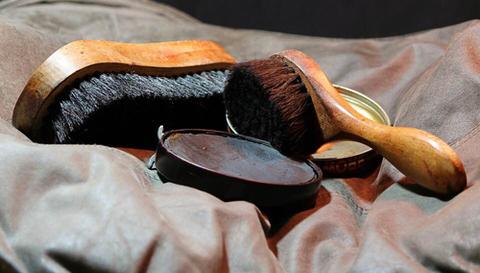
Use a soft cotton cloth or brush to get rid of any dirt and debris that’s visible. For caked-on mud or salt stains, use a slightly damp cotton cloth. If you’re looking to give this type of leather a deep clean, you can use saddle soap, but don’t let it dry as that’ll dry out the leather and make it more prone to cracking.
Once the leather is clean and ready for conditioning, make sure to use a product that is specially made for reptile leather. These types of products will be lighter, which is exactly what you need and want. If your leather is extra dry, you can do a few coats, but keep each coating pretty thin. The leather will be conditioned once it stops absorbing the conditioner. You can then apply wax if you’d like to polish up the leather, but keep in mind that it won’t ever get very glossy. And if you wear alligator leather boots and shoes in adverse weather, finish up your cleaning routine with a non-silicone water/stain protectant.
Shark
Shark leather is like that of its maker: Strong and tough. It also weighs less than cowhide. Sharkskin leather products come in a wide variety of colors, as the leather is conducive to taking on rich colors during the tanning process. Sharkskin care is similar to cowhide; you can use a damp cloth to remove dirt and debris. You can use saddle soap on this type of leather but make sure to remove every last trace of the soap before you proceed onto conditioning.
You can use either a reptile or cowhide conditioner on shark leather. You’ll need to condition this type of leather often, as it is prone to drying out more often than other types of leathers. Take extra care around any seams and edges. You’ll notice that your sharkskin boots already have a bit of a gloss when you purchase them. That’s because most have a glaze applied before they’re released. You can add more of a shine with a hard wax polish.
Storage
Finally, a note on storage. Once you’ve gotten your exotic leather boots looking gorgeous, you definitely don’t want to undo all that work by letting them lollygag in a pile in a closet corner. You also want to take care that the leather isn’t being folded or creased, because that’ll cause damage to both the material and the boots over time.
Instead, help extend their life by storing them the right way with our Hanging Boot Rack. Then, snap some pics and send them to us or share them on our social media sites. We’d love to see your exotic leather boots hanging up nice and neat on our product!
For more leather care, check out:
How To Take Care Of Your Distressed Leather Cowboy Boots


